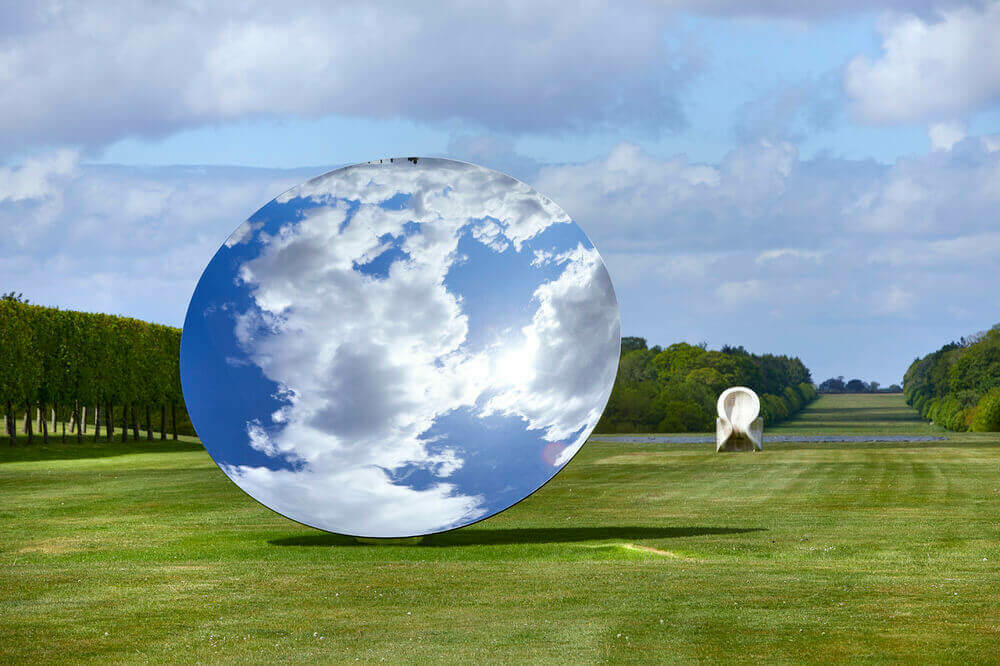
Art evokes emotions, challenges perspectives, and transcends boundaries. Some artists, like Anish Kapoor, can harness such potential in just a few touches, with work that blends minimalism and biomorphism in a layered and immersive way, branching out to the outside world, bending and absorbing the surrounding space, capturing viewers’ attention with compact shapes and choice materials.
Kapoor is a minimalist and a maximalist of polished stainless-steel sculptures, mirrors, and public installations. While some of his creations exude pristine perfection, others possess a visceral, fleshy character, made from resins, wax, and other malleable materials as aberrations from his more refined works. This duality in Kapoor’s artistic expression prompts the question: How can an artist express himself in such disparate manners?
A Life of Contrasts
Anish Kapoor’s life is as intricate as his artistic production. Born in Mumbai in 1954 to an Iraqi Jewish mother and an Indian Punjabi Hindu father, he spent the first few years in India, attending an all-boys boarding school in Dehradun. In the 1970s, after a short stay in Israel, Kapoor wanted to become a full-time artist and moved to the UK to study first at the Hornsey College of Art (1973–77) and later at the Chelsea School of Art and Design (1977–78). The young artist began to gain a presence through the seminal 1978 New Sculpture exhibition at the Hayward Gallery London, which established his career as a leading artist of his generation.
Since the 1980s, Kapoor has worked his way toward becoming one of the most recognized artists. His work appeared in major exhibitions and biennales, some of which won awards. For example, he represented Great Britain at the Venice Biennale in 1990 and won the Turner Prize in 1991. In September 2009, Kapoor became the first living artist to have a solo exhibition at the Royal Academy of Arts.
Kapoor has lived on two continents. Such an experience shaped his art together with his career trajectory. On the one hand, the saturated pigments prevalent in his work pay homage to his Indian heritage or cultural roots. On the other hand, Kapoor’s attention to the here and now results in two distinct artistic facets. If part of his art still focuses on minimalist shapes, void spaces, and stark contrasts, in recent years, another side of Kapoor’s work has become increasingly present—his wax and resin works, sculptures, and paintings on flesh, blood, and visceral elements—which marks an evolution from the biomorphic shapes on which the artist has invested his whole career.
On the occasion of the Untrue Unreal exhibition currently on view at Palazzo Strozzi in Florence, Italy, until February 4th, 2024, let’s dive a little deeper into Kapoor’s production and analyze five of his most iconic works.
